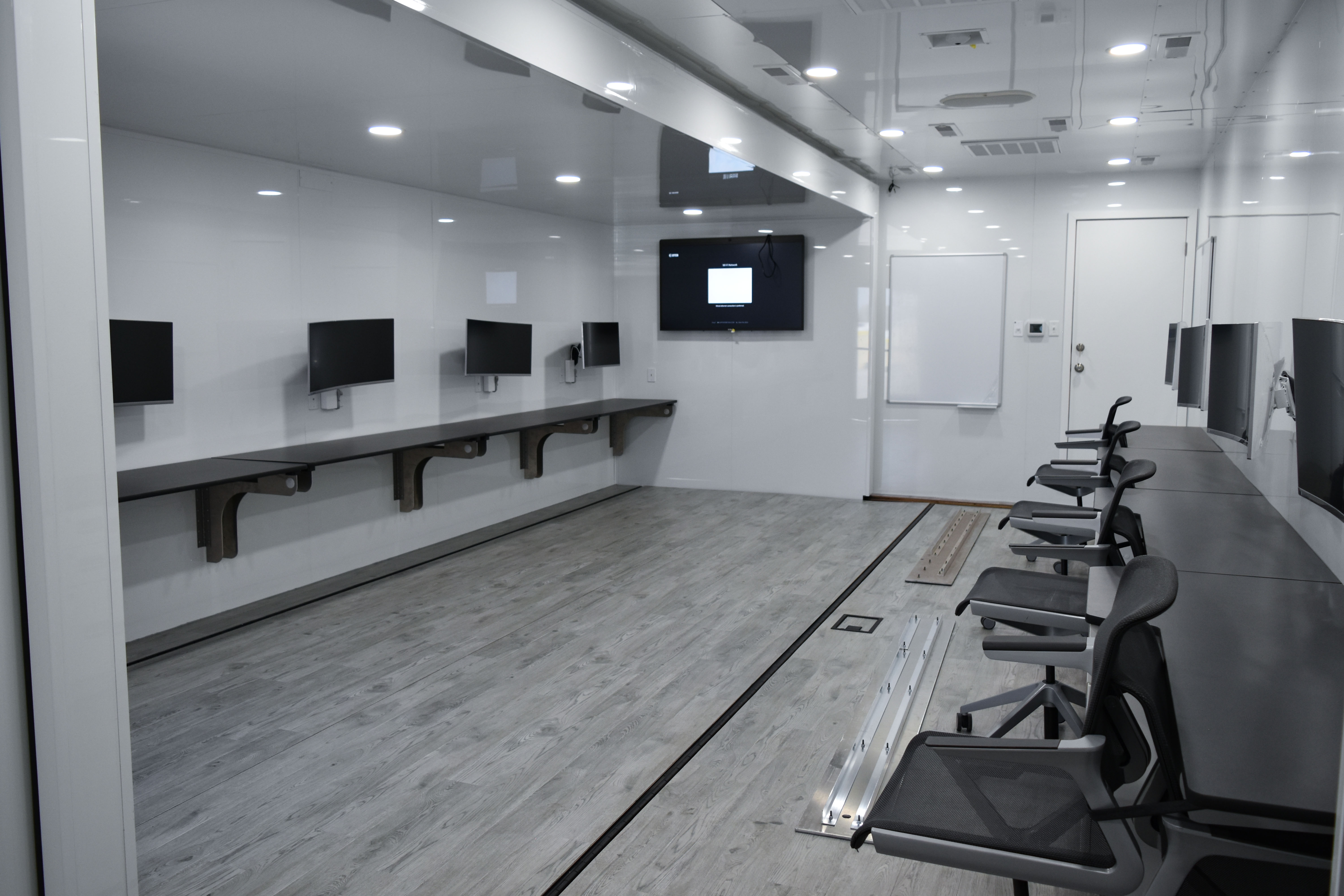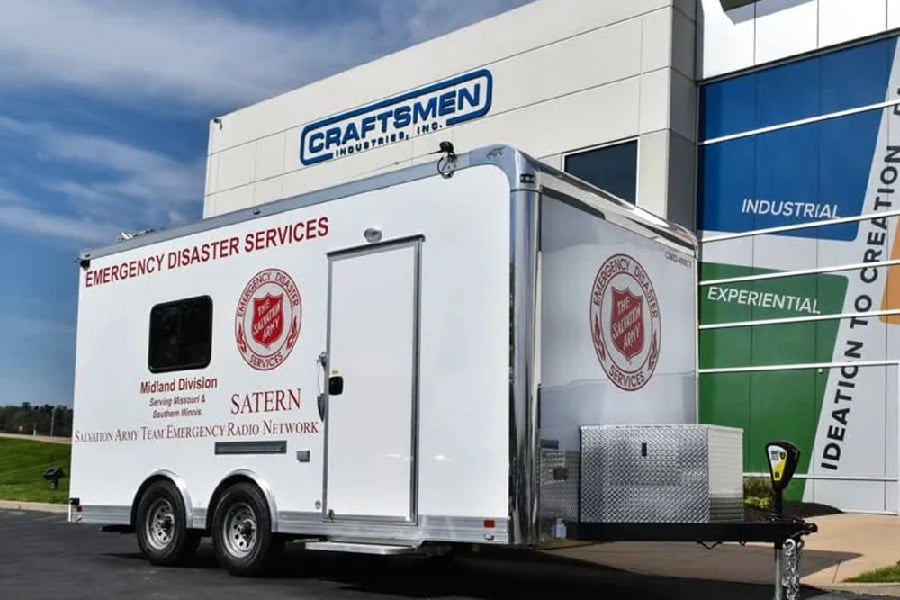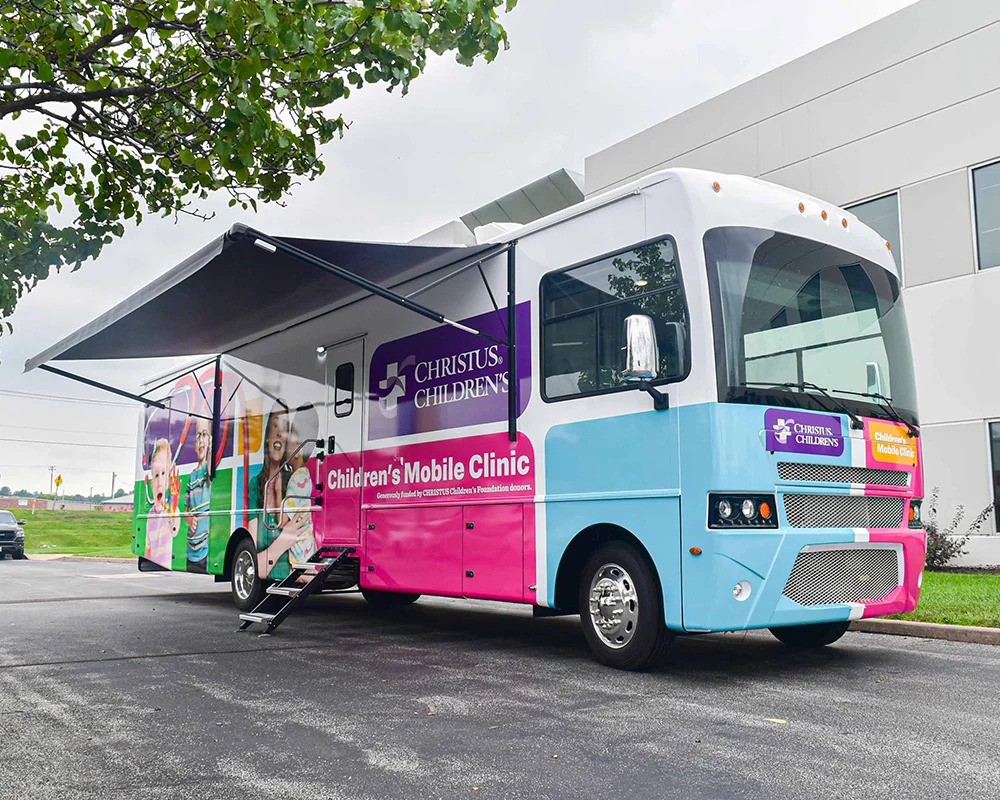Choosing the Right Colors to Attract Customers
The study of color and its impact on human behavior and decision-making, known as color psychology, is an ancient concept with a modern name....

.jpg?width=689&name=Hy-Vee%20Vaccination%20Trailer%20(small).jpg)
Mobile command centers fill a critical need in our country and around the world because they are uniquely able to serve as a base of operations in areas where brick and mortar buildings are not feasible such as remote rural locations or disaster areas. The reasons a mobile center of command may be necessary vary as widely as the different industries and services they provide. These specialized trailers can help in the wake of natural disasters, assist in distributing medical aid, and help government organizations mitigate crime.
The features of a mobile command center vary considerably depending on what operations the unit will be used for. Monitoring screens, emergency response equipment, and planning rooms are standard features. Command centers range in size from SUVs to 50-foot trucks and trailers.
Taking a deeper look at specific benefits and applications of mobile command centers may help you decide how your business may benefit from investing in a mobile command center.
A command center can be tailored to respond to specific emergency situations.
Under most circumstances, individuals are able to travel to nearby hospitals or clinics to seek medical care. However, in the case of natural disasters, civil unrest or extreme poverty, mobile command centers can address specific population health risks in remote or cut off areas.
Other times, command centers will be needed to communicate quickly with officials regarding quickly-evolving situations when traditional communications have been compromised such as terrorist attacks and power outages.
Case Study: Hy-Vee #HelpfulSmileStrong
A mobile medical vehicle in Hy-Vee's disaster relief fleet travels around the Midwest and Southeast helping to administer vaccine doses. Four separate patient stations and a waiting area equip the interior. The trailer can be used for nearly any primary healthcare need.
As a rule, natural disasters aren’t great for business. However, if your business deals with trauma, loss of property, or essential services, mobile command centers are a great way to help out in an emergency. Power outages or flooding may mean your normal offices and workspaces are unusable. A mobile operation can surmount these barriers and travel to sites where the most aid is needed.
Case Study: AmerenUE
The natural gas and energy utility company purchased a mobile command center to aid its response in the event of a significant storm. Craftsmen equipped the Ameren mobile command center with workstations, conference areas, a satellite dish, custom antenna housing and more to help relay critical information during power outages. Services crews deploy with the trailer onsite during restoration efforts.
Wealthier neighborhoods are where businesses build their offices. Because of this, many financial and health services are more difficult for disadvantaged communities to access, especially in times of crisis.
For many charity organizations as well as government agencies, Mobile Command Centers help combat this convenience inequality. Mobile command centers are able to communicate to authorities which areas are in the most dire need of supplies such as food, blankets or shelter.
Case Study: The Salvation Army
In an effort to improve response to disasters, The Salvation Army partnered with Craftsmen Industries to design and build a Rapid Response Unit. The narrow and low profile unit can navigate to nearly any disaster side to provide food and water to those in need. Ample space for crew members and goods provides the organization with a solution that stores more and serves more.
One of the most significant benefits of having a mobile command center compared to a brick-and-mortar operations center is the ability to be in the right spot at the right time. This need is especially pronounced in specific work sectors such as police, investigators, and firefighters.
Case Study: St Tammany Sheriff’s Office
A local sheriff’s office recently invested in an upgraded mobile command center for Covington, Louisiana, and the surrounding area. The large RV-style center will give deputies access to map overlays to locate people during manhunts, SWAT standoffs, and law enforcement pursuits.
The mobile command center also has three dispatch and call-intake workstations and an array of cameras and monitors for briefings and surveillance. These features allow the center to be on the scene of an incident within minutes of receiving a call.
Mobile command centers provide easy and safe storage for equipment that needs to be used on-site for multiple days in a row. Rather than lugging everything home at the end of each day, mobile command centers can provide a base to use as a temporary and moveable office.
Case Study: Hy-Vee Mobile Command Center
When tornadoes struck the Midwest and Southeast areas of the United States, Hy-Vee deployed a mobile command center to the communities in need. Their onsite team is able to comfortably work onsite with functional workstations, a conference room, and a kitchenette. An exterior extending mast increases coverage for clear communication and coordination of relief efforts.
Mobile command centers are at the forefront of many time-sensitive and crucial projects. From vaccinations and health services to police investigations and natural disaster relief, businesses and government agencies can customize mobile command centers to tackle the greatest threats to society.

The study of color and its impact on human behavior and decision-making, known as color psychology, is an ancient concept with a modern name....

In terms of emergency response, every second counts. During times like natural disasters and rescue operations, command centers have a crucial role...

Mobile medical coaches can provide quality medical services in various settings with state-of-the-art medical equipment and advanced technology....